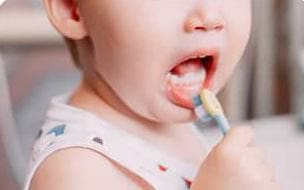
When we think about a baby’s health, we often focus on milestones like walking, talking, or proper nutrition. But one crucial aspect that’s often overlooked is oral health—especially in infants and toddlers. One common but preventable dental issue affecting young children is “bottle rot,” a condition also known as baby bottle tooth decay or early childhood caries (ECC). Despite being largely avoidable, bottle rot can lead to serious dental and health problems if not addressed early.
What Is Bottle Rot?
Bottle rot refers to severe tooth decay in infants and young children, typically caused by prolonged exposure to sugary liquids such as milk, formula, fruit juice, or sweetened drinks. The name “bottle rot” comes from the fact that these liquids are often consumed from a baby bottle, especially at bedtime or during naps. When a child falls asleep with a bottle in their mouth or sips on sugary drinks throughout the day, their teeth are constantly bathed in sugar, leading to the growth of decay-causing bacteria.
How Does It Happen?
In the mouth, there are naturally occurring bacteria that feed on sugars from food and drinks. These bacteria produce acids as a byproduct, which attack the tooth enamel—the hard outer layer of the teeth. Over time, repeated acid attacks weaken and break down the enamel, resulting in cavities.
In infants and toddlers, tooth enamel is thinner and more vulnerable to acid erosion. Additionally, at night or during naps, saliva production decreases, which means there’s less natural rinsing of the mouth. When a child goes to sleep with a bottle full of milk or juice, the sugars linger in the mouth for hours, creating the perfect environment for decay.
Signs and Symptoms of Bottle Rot
Bottle rot often starts subtly, so it’s important for parents and caregivers to be on the lookout for early signs of decay, such as:
- White spots on the teeth (especially along the gum line)
- Brown or black stains
- Visible holes or pits in the teeth
- Swelling or redness in the gums
- Pain or sensitivity, although infants may not be able to communicate discomfort
If left untreated, the decay can worsen, leading to infection, abscesses, and even premature tooth loss.
Why Baby Teeth Matter
Some parents may think baby teeth aren’t important because they eventually fall out. However, baby teeth play a critical role in a child’s development. They help with chewing, speaking, and maintaining space for permanent teeth to grow in properly. Losing baby teeth too early due to decay can lead to:
- Misaligned or crowded adult teeth
- Speech delays
- Difficulty eating
- Pain and infections that affect overall health
Preventing Bottle Rot
The good news is that bottle rot is entirely preventable with a few simple habits:
- Avoid bedtime bottles with anything other than water. Milk, formula, and juice should not be used to soothe babies to sleep.
- Clean your baby’s mouth daily. Even before teeth appear, wipe the gums with a clean, damp cloth. Once teeth come in, use a soft baby toothbrush and a smear of fluoride toothpaste.
- Start dental visits early. The American Academy of Pediatric Dentistry recommends a first dental visit by age 1.
- Limit sugary drinks. Avoid giving your child juice or sweetened drinks in bottles or sippy cups throughout the day.
- Encourage weaning from the bottle. Transition your child to a cup by their first birthday.
Bottle rot is painful
Bottle rot is a painful and costly problem—but it doesn’t have to be. With early attention to oral hygiene and mindful feeding practices, you can set your child up for a lifetime of healthy smiles. Remember, establishing good habits early doesn’t just protect your child’s baby teeth—it lays the foundation for a lifetime of dental health.
